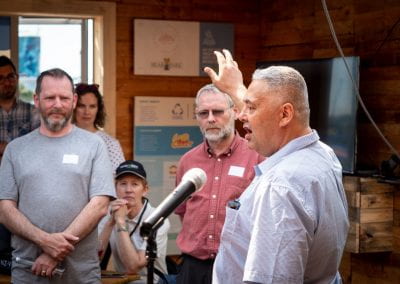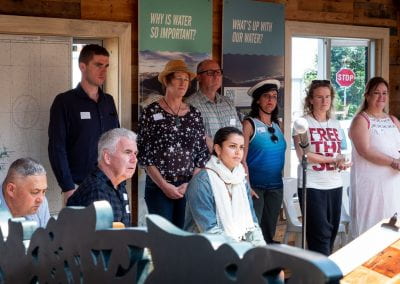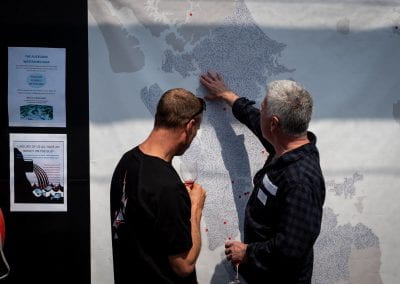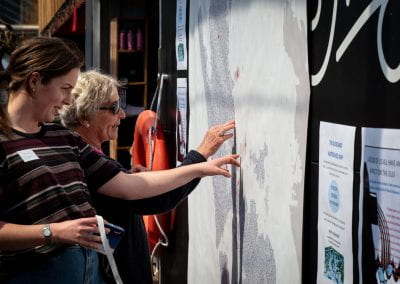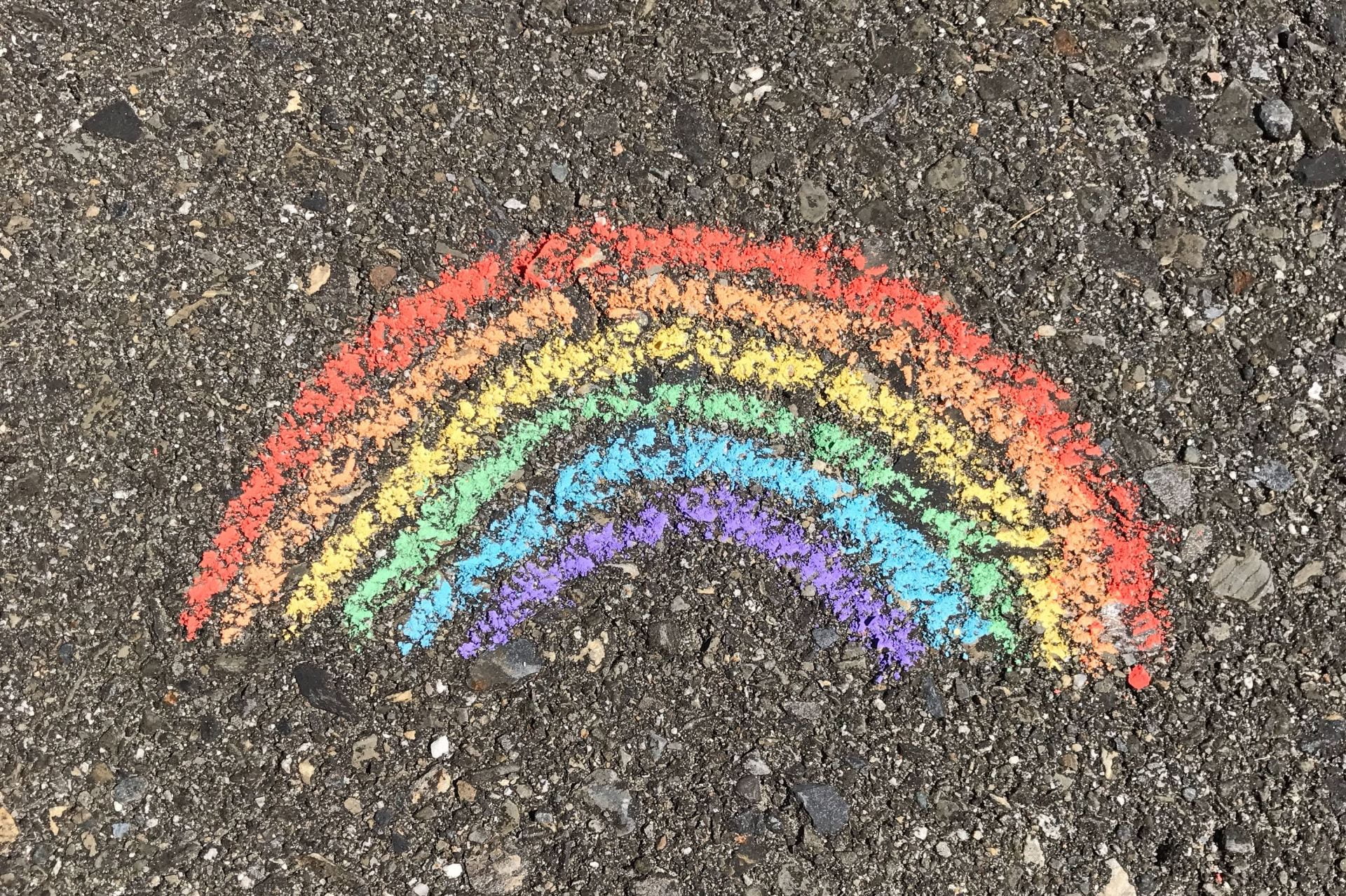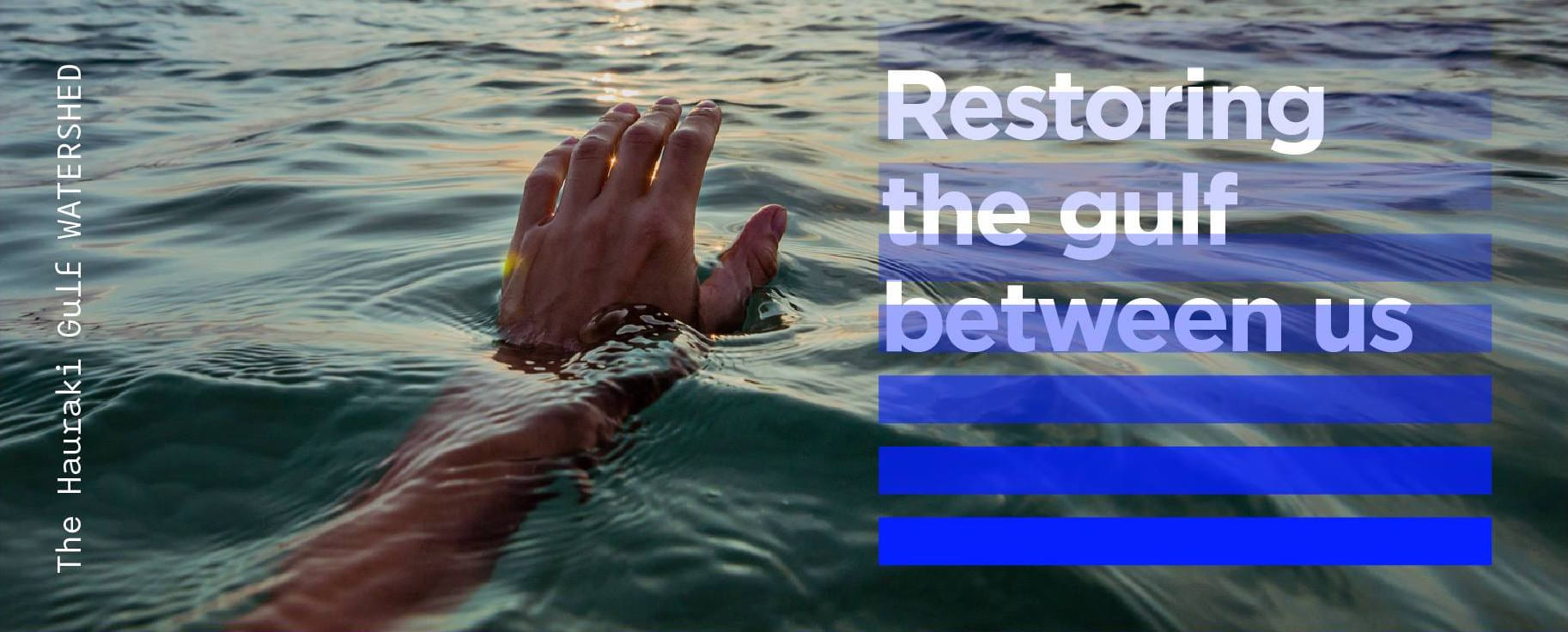
THE HAURAKI GULF WATERSHED is a unique initiative within the Faculty of Creative Arts and Industries and the University of Auckland as a whole. It is a demonstration project for how creative collaboration between students, professionals, community organisations and funding partners can work to explore complex challenges facing humanity’s relationship with the biosphere. In this case, the focus was the eco-system of the Hauraki Gulf, which is presenting a set of challenges right in our backyard or as we soon realised, our front yard.
Imagine if there was a way that people of many walks of life coming together took action to deal with some of the planet’s biggest challenges. And what if talented young people engaged in creative arts education could bring their ideas, energy and innovation into settings that enabled them to learn new ways of addressing these problems. The world might become a vastly different place. This is the scenario that motivated Elisabeth Vaneveld to develop a project for the G.I.F.T. Fund, established by Foundation North in 2017 to encourage breakthrough insights, innovations and solutions to the complex environmental issues facing the Hauraki Gulf.
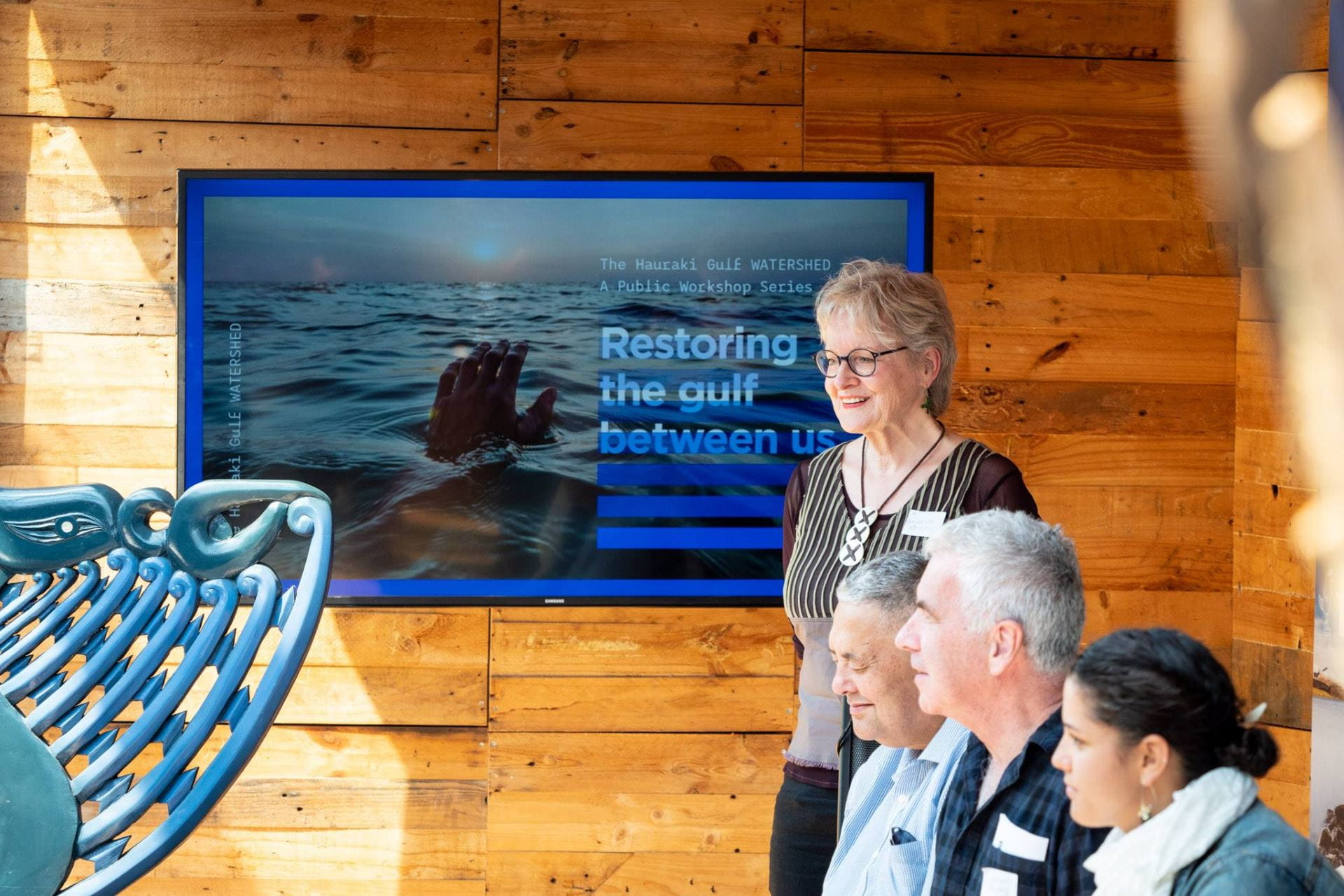

Previous to her role at the University of Auckland, Elisabeth had undertaken research that explored the value of the arts sector’s contribution to interdisciplinary creativity, innovation and entrepreneurship. Working with GIFT, she thought, could deliver an extracurricular, tangible case study within the Faculty of Creative Arts and Industries to show students, along with academic and professional staff the value, features and benefits of creative entrepreneurship through applying creative imagination, talents and skills to a challenge that mattered not only students, but to Auckland and Aotearoa-New Zealand as a whole.
The first step in late 2017, well ahead of a possible application to the G.I.F.T. Fund was gathering a group of 12 creative professionals, drawn from Auckland’s creative ecology to explore the kaupapa, surface initial ideas and assess commitment. The aim was that this group would be joined by an equal number of students and recent graduates from The University of Auckland to drive the project forward if the energy and will was there.
The creative professionals’ group met over four months to explore the challenge and after a few months, 17 ideas were on the table as proof that there were plenty of good ideas ‘out there’. The group agreed to put their ‘ideas container’ to the side so that the focus could turn to designing and delivering a creative ‘crowd-sourcing’ process that would enable Aucklanders themselves to generate their own ideas. This, everyone agreed, was the key to long-term success. Soon an equal number of students and recent graduates drawn from the disciplines of Architecture, Business, Fine Arts, Marine Sciences and Music joined the group to not only add new perspectives, energy and ideas to the project but to learn from the experienced creatives already on board.
Along the way, we learned about important environmental projects already underway across Auckland to cleanup the Hauraki Gulf and the scale and scope of the problems that those projects are tackling. And we began to understand deeply why restoring the mauri, life force and vital essence of Tikapa Moana in the hearts and minds of all Aucklanders is so very necessary.
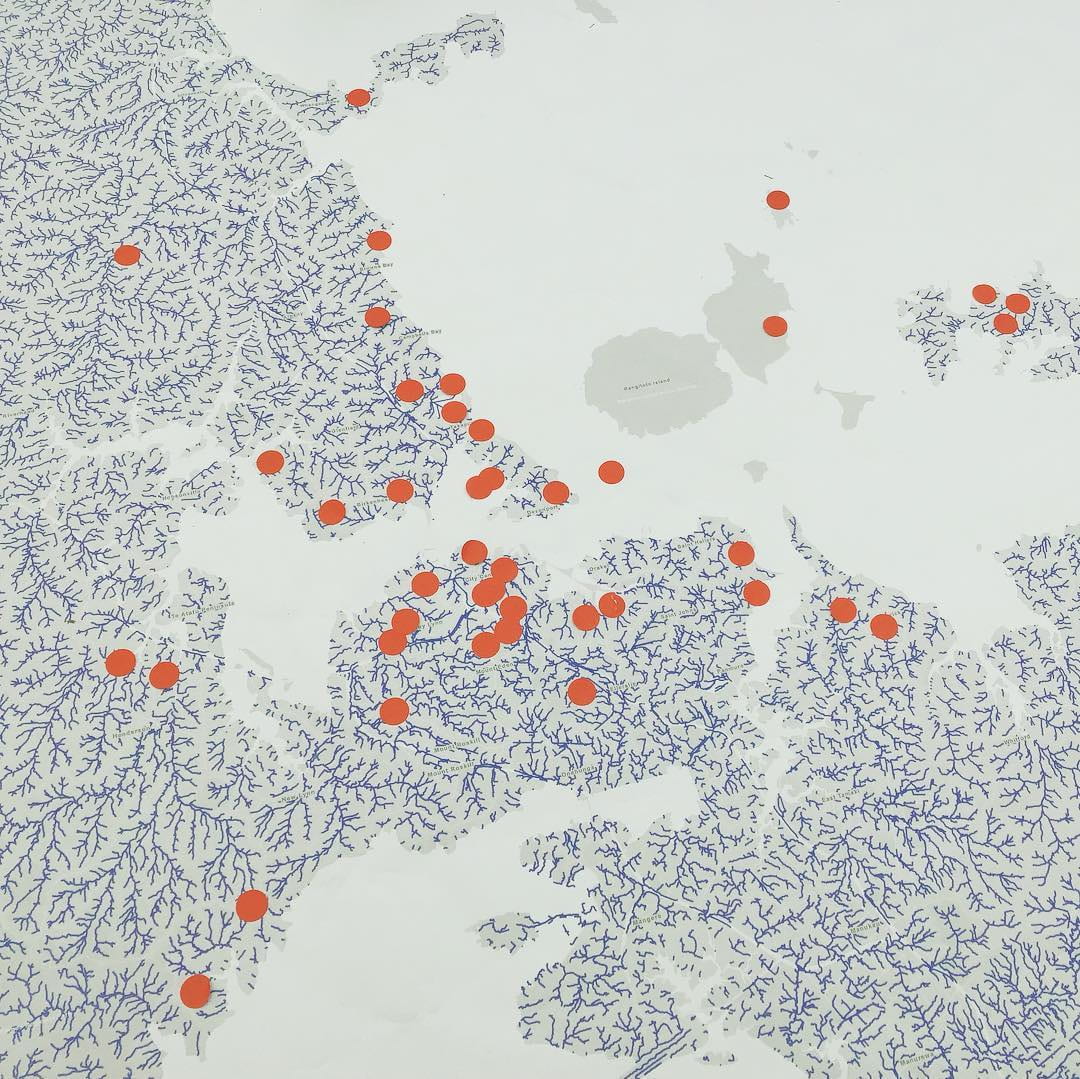
The Concept of Mauri
As the Creative Team strengthened their commitment to the project, a key question arose, “What did people know about mauri?” And not only what did the key members of the team know about mauri but what then in turn did the wider public? It was a pivotal moment in the project to pause to understand what mauri meant. As a concept from Te Ao Māori, the world of Māori, it is not a word with a simple definition. A creative team member, Caroline Robinson who works a lot within the realm of Te Ao Māori, offered to lead a process for the team to learn and understand about this crucial concept, ‘hands-on’.
Members of the creative team were invited to gather at Karaka Bay on the edge of the Gulf and to each bring a small container of water that held a story for them about their connection to Tikapa Moana. The ritual of sharing the water by first telling the story of where ‘your’ water came from and then blending the water with everyone else’s in a beautiful ceramic container at the water’s edge enabled all to experience the energy of water and to experience mauri as a life essence – in this case, the energy, the entity and the spirit of Tikapa Moana, the Hauraki Gulf.
To navigate this moving forward, Caroline Robinson wrote a poem/ karakia that the creative team read each time they met as a collective.
Poem/ karakia by Caroline Robinson
Restoring the mauri of the Hauraki Gulf calls us to engage with her as a whole being.
She is a whole living system, a rich complexity of forces, flows and dynamics.
Who is the Hauraki Gulf?
How do we get to know her?
What are her languages?
Who do we need to be in order to communicate with her? Who do we need to be In order to reciprocate with her?
Ko au te wai, ko te wai ko au.
I am the water and the water is me.
No separation.
We are the Hauraki Gulf.
What is the role of arts and culture in developing our relationships within this understanding?
We are in service.
We are helping align people to their own heart and mind. To the hearts and minds of each other. To the heart and mind of their place.
We are helping people fall in love again.
Working with the ‘hearts and minds’ of Aucklanders speaks to love. Aroha.
We take care of that which we love – self, whanau, community, place.
People come together around meaningful purpose. Through developing the capacity to work in full reciprocity with the mauri of a place, and the mauri of each other, powerful new potential can be born here in Tamaki Makaurau.
So what is the task / what is the process we undertake together, to help move us this way?
mauri ora

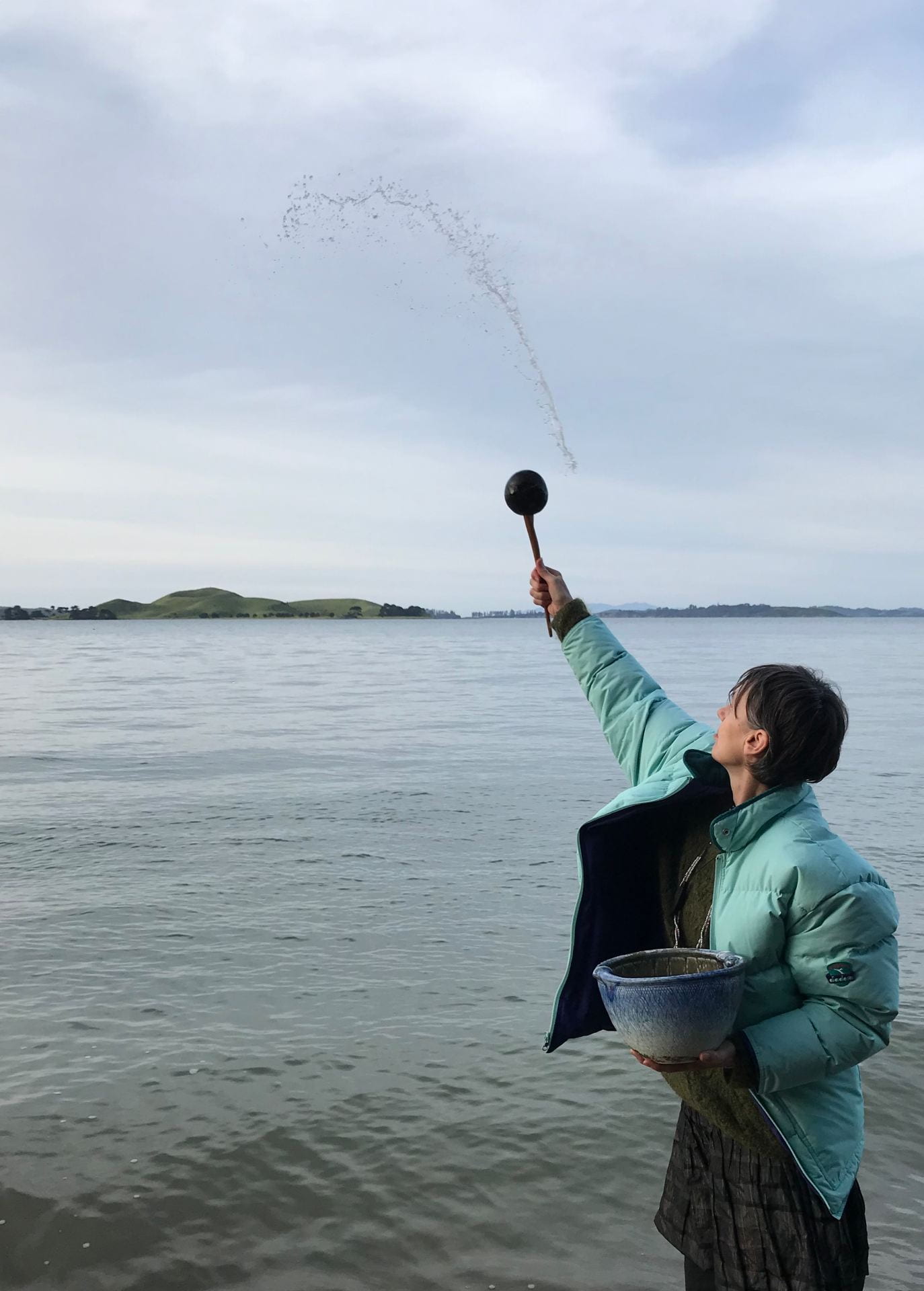
Project launch and workshop delivery
As a ‘crowd-sourcing’ project, the focus of THE HAURAKI GULF WATERSHED // PHASE ONE was a series of three workshop events, each workshop running for six hours on separate days over a two month period. The workshops were preceded by a public launch event called, “Voyage of Discovery”, which provided a myriad of ways for workshop participants, organisations supporting the project and the creative team to learn more about the challenges facing Tikapa Moana while also experiencing the creative process underpinning the workshop series.
The Voyage of Discovery was held on 6 October 2018. The workshops were held as follows:
19 October 2018 Youth // Young people (from Glendowie College, Waiheke High School and the University of Auckland) with a demonstrated interest in the Hauraki Gulf (and the health & wellbeing of the planet)
27 October 2018 Lovers of the Gulf // Members of the public who have an interest in the Hauraki Gulf, including mana whenua, boaties, environmentalists, and concerned citizens
4 December 2018 Corporate // Staff drawn from across the workforce of the Ports of Auckland and Sanfords Fisheries, two corporate organisations who engage with the Hauraki Gulf regularly.
Each workshop was designed and facilitated by a cluster of Creative Team members including students and recent graduates. Workshop teams met regularly and were passionate about creating workshops that would enable participants to engage fully.
The brief that each team was given was to design a creative process that referenced the principles and practices of design thinking, while also allowing for creative process twists that each creative team might like to add. The overall requirement was that each workshop had to deliver in a form that could be documented, tangible ideas by workshop participants relevant to restoring the mauri of the Hauraki Gulf in the hearts and minds of Aucklanders. There was no requirement that any idea at this early stage had to feasible and/or able to be implemented. Flights of imagination were welcome!
The design and delivery of the workshop for corporate organisations was a particularly unique challenge to organise. It took time for members of the Creative Team to find not only the ‘right’ organisations to participate in the project but also the ‘right’ leaders within the organisation’s leadership structure to present the opportunity to. Within the Creative Team there was also considerable discussion about whether to target a wider group of businesses working on, in and around the Hauraki Gulf or whether to focus on a few.
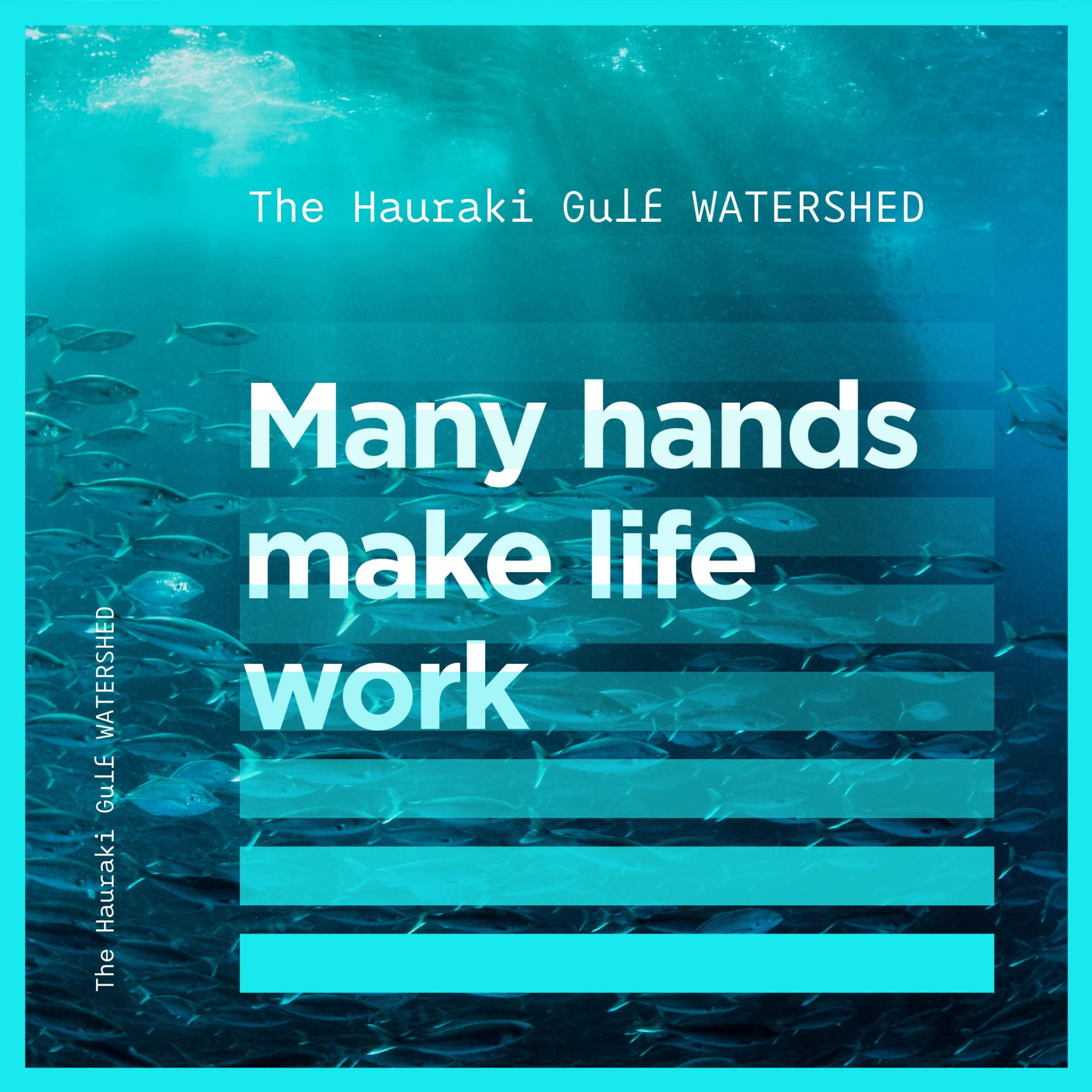
Restoring the mauri of Tikapa Moana
A voyage of discovery
1 navigating star
1 uniting purpose
22 creatives
11 students & recent grads
7 engaging workshops
400+ participants
600+ ideas
117 exciting concepts
23 strong projects
1 creative venture to take us forward
From 600 Ideas Down to 8
Participants across the workshop series generated more than 600 ideas and fragments of ideas. Bit-by-bit these filtered down to just five foundational ideas that together anchor one creative venture that has the potential, as a broad strategy, to engage the hearts and minds of Aucklanders in the challenges facing the Hauraki Gulf.
All in all, six assessment processes were applied to the ideas that were generated over a five-month period in the first half of 2019. These processes engaged the participation of creative team members, workshop participants and associates at every step, albeit in varying degrees.
The 630 ideas were first laid out and collated into themed categories by creative team members, Indigo Harding (Elam graduate) and Regan Duff (UOA PhD candidate) across a number of weeks, based on similarity, or a sense of possible inter-connection. Fragments of ideas sometimes found a place in the spreadsheet and sometimes were insufficiently expressed to be included. From there, 117 strong concepts were described in writing by Regan Duff and Elisabeth Vaneveld (working together), a number of which incorporated fragments of ideas that had been joined to a more cogent idea in the spreadsheet.
Using Survey Monkey, all workshop participants were then invited to identify which ideas stood out to them (bearing in mind the ‘hearts and minds’ challenge at the heart of the project). As well, a control group comprising Faculty of Creative Arts and Industries staff who had not been involved in the workshop series were also invited to do the exercise as a proxy for Auckland citizens. All 117 concepts were presented in Survey Monkey in cluster groups of 20 per page and respondents simply had to pick the five in each cluster that in their view responded best to the challenge. It was then relatively straightforward to rank all 117 ideas based on the number of ticks received.
As part of the Survey Monkey process, basic demographic information was sought and an exercise was undertaken by Elisabeth Vaneveld to compare and contrast the results between young people, the general Survey Monkey population and the control group. The resulting table showed that depending on demographic characteristics and previous involvement in the project, respondents ranked the ideas differently from the other cluster groups, though each list had a number of ideas in the top 25 that were common to all.
The next step involved members of the The Creative Team considering the results across the demographic clusters in order to arrive at a top-20 list. A workshop session was then held at which interested creative team members and a number of specialist guests reviewed each idea in the top-20 list in order to add practical and logistical information to the idea.
For example:
- Was ‘someone’ already working on the idea
- Members of the Creative Team at work analysing workshop ideas
- What resources would likely be required to get the idea off the ground
- What ball-park dollar figure would be required to get the idea up and running
- Which organisations/agencies could perhaps partner to deliver the idea
- Did the idea best suit a digital, technical or event rollout? Or something else?
At that workshop, the Creative Team was also invited to review the ‘results tables’ arising from the Survey Monkey exercise and choose three ideas that were not already in the top-20 list as ‘wild-cards’ to include in what would now be a top-23 list.
Each idea in the top-23 list was then subject to a detailed assessment process over a two-week period by Richard Howard with help from Regan Duff and Elisabeth Vaneveld.
Additional insights were added to each top-23 idea including the scale of the proposed project arising from the idea, timing, resources and effectiveness; its fit to G.I.F.T goals and its immediate relevance to the focus of THE HAURAKI GULF WATERSHED.
It was during this part of the process that the Creative Team had significant moment of learning, which will strongly influence the project as it continues on. We began to realise that the more we analysed and assessed each of our top-23 ideas, the more distant the creative energy that had generated the idea in the first place was. Indeed, we realised that we were at risk as a team of losing our own creative drive for the project because the analysis phase was becoming rather clinical with too much ‘head’ and not enough ‘heart’ to the fore.
Creative Team members adding implementation details to the top-23 ideas
Nonetheless, eight ideas did rise to the top, all things considered and several weeks later, in late March 2019, we came together again to look at those. Our focus was to consider how each of these eight ideas could be developed in a more holistic frame to balance a ‘mind, body and spirit’ approach and to honour the creative energy that had generated the bones of the idea in the first place.
Our top eight ideas were all described on individual A3 sheets, which were laid out on a large table with members of the Creative Team grouped around them. A pattern of possibility and a synergy emerged as we shuffled the top-8 around – and in the organic process of mixing the ideas, sharing thoughts and surfacing reflections about the project, we discovered that the way forward was not to choose one final idea, but rather to draw together five ideas that interacting together within a strategic and a creative whole could be the basis of one creative venture to take forward.
Elisabeth Vaneveld took on the creative task of integrating the five ideas into a conceptual frame that if implemented as one creative venture could have the potential of honouring, inspiring and fulfilling the expectations of the project’s stakeholders.
Shuffling and discussing the top-8 ideas Old Government House, University of Auckland
The long period of recording, analysing and assessing all 600+ ideas as contributed by a myriad of Aucklanders was a big test for the Creative Team. We learned that this kind of work could be done in groups even though not many Creative Team members had research experience or training. We learned why it is essential to provide a clear process for engaging with each task, along with the right tools. Most importantly we learned that where there is a willingness to change direction or refine processes in response to group feedback, a better outcome overall is a likely possibility especially if the group’s critical thinking is welcomed and encouraged by the people leading the process.
The most significant learning that we had as a group however was realising that it was ‘okay’ to reach the end of the analysis process without the selection of one ‘killer’ idea that was going to drive the project forward. We came to understand and accept as a group that the power of our creative energy, insights and engagement in and of itself influenced how we worked with the ideas that the workshop series had generated. As we organically began to see and reveal patterns across clusters of ideas that shared common elements, this then organically led us to blur the boundaries between similar and in some instances dissimilar ideas, to add snippets of various ideas to other ideas and to cluster individual ideas into concepts that had the potential to become projects.
Without consciously realising it, the Creative Team was demonstrating in action, the ‘bending’, ‘blending’ and ‘breaking’ model of human creativity most recently been described by Anthony Brandt & David Eagleman in their book, “The Runaway Species: How Human Creativity Remakes the World”. In that text, ‘bending’ occurs when an original is modified or twisted out of shape; in ‘breaking’ a whole is taken apart and in ‘blending’ two or more sources are merged. T
he authors write, “ . . . The three Bs are a way of capturing the brain operations that underlie innovative thinking . . . By applying this cognitive software to everything around us, we generate an ongoing tidal wave of novel worlds . . . Human creativity emerges from this mechanism. We bend, break and blend everything that we observe and these tools allow us to extrapolate far from the reality around us.” Brandt & Eagleman, 2017 p 49-50
We came to see that the emergent process is both a crucial contributor and a consequence of projects and environments in which the three Bs flourish. In our case, we allowed the emergent process to shape the project’s conceptual and cultural directions in small and large ways, while at the same time providing strong platforms of and tools for creative engagement to support hundreds of people to successfully participate in the project on their terms.
The Reveal
Phase one of THE HAURAKI GULF WATERSHED came to a close on Saturday, 13 April 2019 at a celebration event at The Sustainable Coastline Flagship, Wynyard Quarter in Auckland, at which the story of project was conveyed in a series of creative presentations and the creative venture that we wish to take forward was revealed to special guests. Members of the Creative Team
facilitated the event following the creative inspiration and project management of Richard Howard. Its core focus was a reveal ceremony, which involved inviting unsuspecting guests to open three treasure boxes that uncovered different aspects of the project including, in the third box, the creative venture to be taken forward into THE HAURAKI GULF WATERSHED PHASE TWO, subject to levels of investment and resources available.
Presentation copies of the creative venture were formally handed to Professor Diane Brand, Dean of the Faculty of Creative Arts and Industries, the University of Auckland, and Chris Severne, Trustee, Foundation North and Trustee, G.I.F.T. The event marked the end of eighteen months of scoping, planning and delivering a complex, exciting project involving more than 400 people and organisations. It was humbling and satisfying to take the time to express our thanks, appreciation and gratitude to all who had been involved as members of the creative team, as workshop participants and therefore the generators of hundreds of ideas in the workshop series and as investors and sponsors who gave more than we ever expected.
Download the Hauraki Gulf Watershed Phase 1 Report
Where to from here?
The overall effect of combining five ideas into one creative venture provides a platform for a sustained campaign, which as it rolls out, has the strong potential of generating a movement of committed citizens across Tamaki Makaurau willing to respond to THE HAURAKI GULF WATERSHED call to action. Each of the five projects that together comprise the creative venture proposed has a wealth of detailed information behind it for the necessary strategy, partnership and project development that the creative venture requires.
The creative venture assumes engagement with media and design, storytelling, tikanga and matauranga Māori, live events and at least one large public event of international scale while also working towards the adoption of personhood status for Tikapa Moana.
As such, the creative venture and its contributing project ideas will enable a broad range of creative and cultural interpretations and expressions in their implementation. It offers the kind of ‘creative think’, design challenge, production scope and multiple outcomes that will draw highly motivated creative arts students, producers, educators, innovators and entrepreneurs into THE HAURAKI GULF WATERSHED PHASE TWO leading to stimulating opportunities for like-minded groups, organisations, agencies and the general public to join in.
A concerted conceptual, design and planning effort to scope the creative venture into a number of deliverable initiatives is the next significant step and this work, which is already informally underway within the Creative Team, will determine which elements of the creative venture are to be developed as anchor projects and which content, components and/or influencers are to be progressed later. As well, linking the second phase more formally to an undergraduate programme of study within the Faculty of Creative Arts and Industries is also being explored. Therefore it is anticipated that planning for phase two will continue throughout 2019 with a further application to Foundation North G.I.F.T. to be presented in October 2019. The aim is to launch THE HAURAKI GULF WATERSHED PHASE TWO in March 2020 to coincide with the start of Semester One at the University of Auckland.
